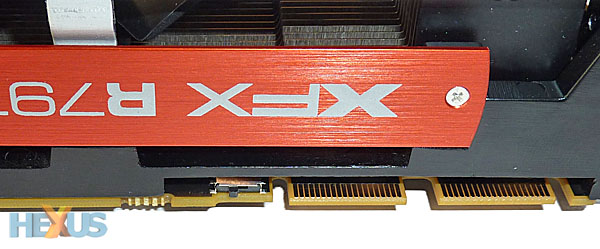Lookin' different
AMD pulled a fast one by launching the lush Radeon HD 7970 just before Christmas 2011. The firm gave add-in-board partners a January 9 date for releasing their own cards. One would suspect that partners looking to get their cards on shelves would just rebadge the reference card; it's pretty good in all respects, after all.
Yet the underlying physical similarities between Radeon HD 6970 and HD 7970 boards mean that partners won't have to indulge in grounds-up engineering for custom-designed heatsink-and-fan units. We reckon there's minimal retooling required when changing coolers, helped by the fact that the beast of a new GPU has a similar power-draw and PCB length.
XFX has decided that the all-new 'Tahiti XT' GPU is best showcased with a brand-new cooler. Borrowing from the skills learnt in designing an aftermarket cooling solution for the Radeon HD 6950, let's present the first non-standard HD 7970 to cross our path.
The card-long cooler uses what XFX terms Double Dissipation technology, where the left-hand fan cools the GPU area while the right-hand fan takes care of the voltage-regulation components and associated heatsinks.
But what's interesting here is that the cooler doesn't enclose the underlying heatpipe-assisted heatsink. Rather, it's left to 'float' over it, leaving plenty of room for air to circulate around the card. XFX reckons this setup provides superior airflow venting through the card rather than channeling it all out of the back, as is the case with most modern high-end GPUs.
In operation the fans do spit out lots of airflow through both sides of the card, though leave it under load for a while and the air becomes, understandably, warmer. We have no empirical evidence to suggest that hot air forced out on the motherboard side will compromise system stability, but logic dictates it can't be good to have hot air beat against the mainboard.
The floating cooler makes more sense if the chassis has a side-panel-mounted blower fan pushing air over the GPU(s). In essence this would complement the cooling to a greater degree than on an enclosed design.
What's more, this cooling, dubbed GHOST, is reckoned to be significantly quieter than 'other' dual-fan solutions. The open-fan design still pushes a reasonable amount of airflow through to the back. Like AMD's reference card, the four digital outputs are contained on the lower section, thereby enabling a smoother passage of hot air to escape through the rear.
Measuring the same 11in as the reference card and using an identical six-and-eight-pin PCIe power-delivery system, the actual PCB is largely standard. This means it has the same dual-BIOS switch on the right-hand side (as we look at it) and, just like the reference card, this doesn't activate higher frequencies or extra cores. Understanding that the HD 7970 GPU is rather partial to overclocking, it's a shame that this 'Double Dissipation' card is pre-programmed with the default 925MHz core and 5,500MHz memory clocks.
We know of other AMD partners that are launching OC models from the get-go, and XFX itself has three other cards in the HD 7970 range that all offer something a little different. This dual-fan version is also available as a 1,000MHz core/5,700MHz memory offering, dubbed the Black Edition, while two reference-looking HD 7970s also ship at default and overclocked speeds. Who thought buying a top-end card would be this complicated, eh?
Set to arrive to market with a £30 premium over the reference HD 7970, thus likely to be available for £480 or so, XFX uses a standard-looking PCB but upgrades the cooler on its DD model. The two questions we need to answer are whether this cooler outperforms the reference one in terms of acoustics and cooling ability, and does it enable even-higher overclocks.















